
Code: 15839573
Evaluation of genetic diversity of jackfruit (Artocapus heterophyllus Lam) varieties based on sequence analysis of the rbcL gene
by Prem Jose Vazhacharickal, Jiby John Mathew, Ajesh C Kuriakose, Sajeshkumar N. K
Scientific Study from the year 2016 in the subject Biology - Genetics / Gene Technology, Mar Augusthinose College, language: English, abstract: Jackfruit (Artocarpus heterophyllus) is commonly grown in home gardens of tropical and ... more
- Language:
 English
English - Binding: Paperback
- Number of pages: 76
Publisher: Grin Publishing, 2017
- More about this

56.10 €
RRP: 57.25 €
You save 1.15 €

In stock at our supplier
Shipping in 15 - 20 days
You might also like
-

Keine Angst vor dem Glück
12.32 € -9 %
Give this book as a present today
- Order book and choose Gift Order.
- We will send you book gift voucher at once. You can give it out to anyone.
- Book will be send to donee, nothing more to care about.
More about Evaluation of genetic diversity of jackfruit (Artocapus heterophyllus Lam) varieties based on sequence analysis of the rbcL gene
You get 140 loyalty points
 Book synopsis
Book synopsis
Scientific Study from the year 2016 in the subject Biology - Genetics / Gene Technology, Mar Augusthinose College, language: English, abstract: Jackfruit (Artocarpus heterophyllus) is commonly grown in home gardens of tropical and sub-tropical countries. The fruit contains high levels of carbohydrates, protein, starch, calcium and vitamins. Jack fruit has diverse medicinal uses, especially anti-oxidant, anti-inflammatory, anti-microbial, anti-cancer and anti-fungal activity. Jackfruit is considered to be an underutilized fruit where most of the fruits get wasted due to ignorance, lack of post harvest technology and gaps in supply chain systems. Jackfruit contains more protein, calcium, iron, vitamins and other essential nutrients as compared to the common fruits. To find out the morphological variation among jack fruits among Kerala we conducted an elaborative survey and found out the parameters such as tree characteristics, leaf characterises or fruit characteristics of selected samples. Both qualitative and quantitative data are measured using field visits and standard methods and morphological indicators; after analysis of data there is a morphological variation among the jack fruit samples identified. Advances in the genetic markers such as RFLP and PCR based methods are more reliable for identification of genetic diversity than morphological markers although each technique has advantages and limitations. The objective of this research work was to estimate the level of genetic diversity and to assess genetic relationships among six varieties of jackfruit using the 'rbcL gene' based on PCR technique and RFLP markers. The partial sequence of 'rbcL' gene of six different Artocarpus varieties was used in the analysis. The size of amplified products was approximately 700 bp. After sequencing and sequence editing, sequence information on a 651 bp region was finally obtained for analysis. The alignment of sequences revealed two haplotypes out of 651 sites. The nucleotide frequencies are 27.96% (A), 29.47% (T/U), 19.69% (C), and 22.89% (G). Being one of the underutilized fruits in India, Artocarpus heterophyllus Lam has promising leads to further scientific research and livelihood strategies. The study of rbcL gene using PCR and RFLP seems to be a promising tool in establishing genetic diversity among jackfruit varieties.
 Book details
Book details
Book category Books in English Mathematics & science Biology, life sciences Life sciences: general issues
56.10 €
- Full title: Evaluation of genetic diversity of jackfruit (Artocapus heterophyllus Lam) varieties based on sequence analysis of the rbcL gene
- Author: Prem Jose Vazhacharickal, Jiby John Mathew, Ajesh C Kuriakose, Sajeshkumar N. K
- Language:
 English
English - Binding: Paperback
- Number of pages: 76
- EAN: 9783668383296
- ISBN: 3668383294
- ID: 15839573
- Publisher: Grin Publishing
- Weight: 109 g
- Dimensions: 210 × 148 × 5 mm
- Date of publishing: 03. February 2017
Trending among others
-

The Molecule of More
15.76 € -24 % -

Psychopath Inside
16.87 € -16 % -

We Are Our Brains
11.41 € -20 % -

Brain Rules (Updated and Expanded)
13.94 € -14 % -

Incognito
10.81 € -27 % -
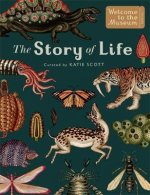
Story of Life: Evolution (Extended Edition)
13.33 € -28 % -

Ecology and the End of Postmodernism
4.94 € -18 % -

Systems View of Life
28.80 € -14 % -

Evolution: The Whole Story
21.32 € -24 % -

Plastic Mind
15.15 € -18 % -
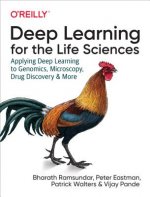
Deep Learning for the Life Sciences
72.58 € -19 % -

Seven Daughters Of Eve
12.22 € -22 % -

Sapiens
21.42 € -

Cosmic Serpent
10.40 € -27 % -

The Selfish Gene
11.92 € -24 % -

Homo Deus
11.31 € -18 % -

Blind Watchmaker
12.83 € -23 % -

Stealing Fire
11.31 € -28 % -

Power of Habit
12.02 € -24 % -
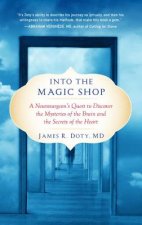
Into the Magic Shop
14.75 € -23 % -
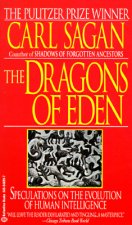
Speculations on the Evolution of Human Intelligence
7.98 € -22 % -

Story Genius
13.94 € -23 % -

Oxygen
12.32 € -28 % -

Double Helix
10.30 € -28 % -

Feeling Of What Happens
13.33 € -28 % -

Brain
11.72 € -20 % -

Undoing Project
11.01 € -13 % -

The Story of the Human Body
14.35 € -22 % -

The Extended Phenotype
13.03 € -24 % -

Brain's Way of Healing
11.31 € -28 % -

Evolution
23.85 € -22 % -

Hidden Spring
13.84 € -19 % -

Descartes' Error
14.35 € -22 % -

Life on Earth
27.39 € -

The Storytelling Animal
16.77 € -16 % -

Moral Animal
15.26 € -28 % -

River Out of Eden
11.11 € -22 % -

Ancestor's Tale
15.15 € -23 % -

Gamer's Brain
65.10 € -5 % -

Symbiotic Planet
12.83 € -36 % -
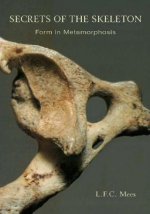
Secrets of the Skeleton
23.65 € -

Ecological Thought
25.37 € -18 % -

Race Differences in Intelligence
34.87 € -

Invisible Classroom
29.51 € -5 % -

T. rex and the Crater of Doom
16.97 € -19 % -

Epigenetics Revolution
13.23 € -5 % -

Human Brain Coloring Book
17.38 € -27 % -

On the Origin of Species
10.10 € -24 % -

Affective Neuroscience
79.45 €
Collection points Bratislava a 2642 dalších
Copyright ©2008-24 najlacnejsie-knihy.sk All rights reservedPrivacyCookies


 15549 collection points
15549 collection points Delivery 2.99 €
Delivery 2.99 € 02/210 210 99 (8-15.30h)
02/210 210 99 (8-15.30h)